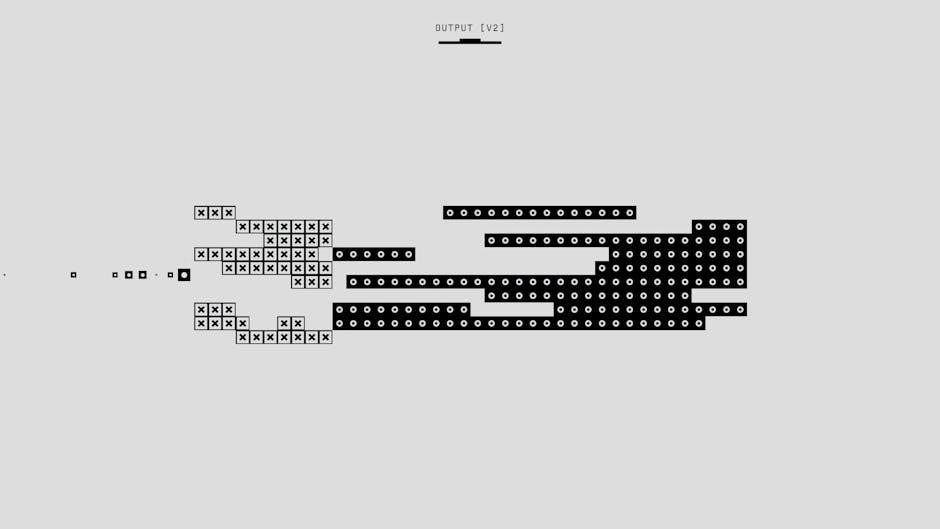Composite shapes‚ formed by combining simpler shapes like rectangles and triangles‚ require breaking them down to calculate their total area effectively for various mathematical problems.
Definition of Composite Shapes
Composite shapes‚ also known as compound shapes‚ are geometric figures formed by combining two or more simpler shapes‚ such as rectangles‚ triangles‚ and squares. These shapes are essential in various mathematical problems‚ especially when calculating areas. They can be found in real-world objects‚ making them practical for understanding spatial relationships.
Importance of Calculating Areas of Composite Shapes
Calculating areas of composite shapes is crucial for problem-solving in geometry‚ enabling students to understand how complex figures can be broken down into simpler components. This skill is essential for real-world applications‚ such as architecture‚ engineering‚ and design‚ where precise measurements are necessary. Regular practice with worksheets helps improve accuracy and builds mathematical confidence.

Steps to Calculate the Area of Composite Shapes
Composite shapes’ areas are found by identifying simpler shapes‚ calculating each area‚ then adding or subtracting them to get the total area accurately.
Identifying Individual Shapes Within a Composite Figure
To tackle composite shapes‚ start by breaking them into simpler components like rectangles‚ triangles‚ or squares. This step ensures each part can be measured individually‚ making calculations manageable. By identifying these basic shapes‚ students can apply standard area formulas effectively‚ setting a solid foundation for accurate total area calculation. Proper visualization and sketching often aid this process.
Calculating the Area of Each Individual Shape
After identifying the basic shapes within a composite figure‚ apply the appropriate area formulas for each. For rectangles‚ use length × width‚ and for triangles‚ use ½ × base × height. Ensure all measurements are in consistent units to avoid errors. Accurate calculation of each component’s area is crucial before summing them up for the total area of the composite shape.
Adding or Subtracting Areas to Find the Total Area
After calculating the area of each individual shape‚ add or subtract them to determine the total area of the composite figure. This method ensures accuracy by breaking down complex shapes into simpler components. Always label each step with the correct units to maintain clarity and avoid miscalculations. This systematic approach simplifies understanding and mastering composite area problems.
Types of Composite Shapes
Composite shapes are categorized into L-Shapes‚ T-Shapes‚ and Irregular Composite Shapes‚ each requiring unique strategies to calculate their areas by breaking them into simpler geometric components.
L-Shapes
L-Shapes are common composite figures formed by joining two rectangles at a right angle‚ resembling the letter “L.” To find their area‚ break them into smaller rectangles‚ calculate each area separately‚ and sum them. This method ensures accuracy when dealing with irregular dimensions. L-Shapes often appear in worksheets and real-world applications like house plans or furniture designs.
T-Shapes
T-Shapes are composite figures resembling the letter “T‚” typically formed by combining two rectangles—one horizontal and one vertical. To find their area‚ divide the shape into its rectangular components‚ calculate each area separately‚ and sum them. T-Shapes often appear in worksheets and real-world designs‚ such as construction plans or furniture layouts‚ making them practical for area calculation exercises.
Irregular Composite Shapes
Irregular composite shapes lack uniformity in form‚ often combining multiple simple shapes like triangles‚ circles‚ and polygons. These complex figures require strategic division into recognizable components. Worksheets on irregular shapes emphasize problem-solving skills‚ teaching students to break down non-standard forms into manageable parts for accurate area calculation. This skill is essential for real-world applications in architecture and design.
Practical Applications of Composite Shapes
Composite shapes are essential in real-world applications like architecture‚ engineering‚ and crafting‚ where understanding complex forms enhances design and problem-solving skills.
Architecture and Design
Composite shapes play a crucial role in architecture and design‚ enabling the creation of complex and visually appealing structures. Architects often use these shapes to design unique buildings‚ blending functionality with aesthetics. Understanding how to calculate their areas is vital for precise measurements and material efficiency‚ ensuring that designs are both innovative and practical. This skill is fundamental in drafting detailed floor plans and facades.
Crafting and DIY Projects
Composite shapes are essential in crafting and DIY projects‚ allowing for creative and functional designs. Calculating their areas helps in measuring materials accurately‚ whether for woodworking‚ sewing‚ or home decor. This skill enhances precision and creativity‚ ensuring that projects like custom furniture or quilts are both visually appealing and perfectly sized. It bridges art and mathematics seamlessly.

Using Worksheets for Learning
Worksheets are invaluable tools for mastering the area of composite shapes‚ offering structured practice through varied problems and visual aids to reinforce learning and retention effectively.
How to Effectively Use Area of Composite Shapes Worksheets
To effectively use these worksheets‚ start by identifying individual shapes within the composite figure. Calculate the area of each shape separately using appropriate formulas. Add or subtract these areas to find the total. Regular practice with diverse problems enhances problem-solving skills and builds confidence in handling complex composite shapes.
When tackling complex composite shapes‚ begin by sketching the figure and labeling each component. Identify basic shapes like rectangles‚ triangles‚ and squares. Use formulas for each shape’s area‚ ensuring accurate calculations. Visualizing the breakdown and systematically adding or subtracting areas helps simplify the process and reduces errors. Regular practice reinforces these problem-solving strategies. Free PDF worksheets for composite shapes are available on websites like MathWorksheetsLand.com and corbettmaths.com‚ offering practice problems and video tutorials to aid learning and teaching effectively. Various websites offer free PDF worksheets for calculating the area of composite shapes. MathWorksheetsLand.com and corbettmaths.com provide downloadable resources with problems involving shapes like rectangles‚ triangles‚ and L-shapes. These worksheets are ideal for students and educators seeking practice materials aligned with curriculum standards‚ ensuring comprehensive understanding of composite shape area calculations. Popular platforms like MathWorksheetsLand;com and ByteLearn.com offer free‚ high-quality PDF worksheets for calculating the area of composite shapes. These sites provide diverse exercises tailored for different grade levels‚ ensuring comprehensive practice. They are ideal resources for both students and educators seeking to master area calculations with clear‚ structured problems and examples. Students often incorrectly apply area formulas or miscalculate measurements. These errors can lead to inaccurate total areas‚ emphasizing the need for careful computation and verification in each step. A common mistake is misapplying area formulas for individual shapes within composite figures. For example‚ using the wrong formula for triangles (e.g.‚ base times height without dividing by two) or misidentifying dimensions for rectangles can lead to significant errors. Always double-check the correct formula for each shape and ensure accurate measurements are used. Measurement and calculation errors are common when dealing with composite shapes. Incorrectly measuring dimensions or miscalculating areas of individual shapes can lead to wrong totals. Mixing units or failing to properly add or subtract areas also causes errors. Always double-check measurements‚ calculations‚ and unit consistency to ensure accuracy. Using visual aids can help identify and correct these mistakes effectively. Visual aids and diagrams play a crucial role in understanding composite shapes by breaking down complex figures into simpler components‚ enhancing problem-solving skills for students of all levels. Examples include labeled illustrations of L-shapes and T-shapes‚ helping learners visualize how areas combine to form the total area of composite figures effectively. Such tools make learning engaging and accessible. Visual learning aids‚ such as diagrams and charts‚ help students grasp composite shapes by breaking them into familiar components. This method enhances spatial awareness and simplifies complex calculations‚ making it easier to apply area formulas accurately. Visual tools also foster a deeper understanding of how individual shapes contribute to the total area‚ improving problem-solving skills and academic performance in geometry and related fields. They provide a clear‚ structured approach to learning‚ ensuring that students can confidently tackle even the most intricate composite figures with precision and accuracy‚ while also making the learning process more engaging and enjoyable for all types of learners. Diagrams in worksheets often depict composite shapes divided into simpler figures like rectangles and triangles. For instance‚ an L-shape might be shown split into two rectangles‚ with dimensions labeled. Shaded areas highlight specific regions‚ guiding students to focus on particular sections. These visual breakdowns make it easier to apply area formulas and calculate totals‚ ensuring clarity and accuracy in problem-solving. Such illustrations are particularly useful for visual learners‚ helping them understand how complex shapes are composed of basic geometric forms and how each part contributes to the whole. By providing a clear and structured visual approach‚ diagrams enable students to grasp the concept of composite shapes more effectively‚ making the learning process more intuitive and engaging. They also serve as a valuable reference point when working through practice problems‚ allowing students to check their understanding and identify areas where they may need additional review or practice. Overall‚ the use of detailed‚ well-labeled diagrams in worksheets is an essential component of successfully teaching and learning about composite shapes‚ as they provide a concrete foundation for abstract mathematical concepts. This‚ in turn‚ helps students build a stronger grasp of geometry and its practical applications in real-world scenarios. Break down complex shapes into simpler parts‚ calculate each area separately‚ and sum them for the total. Use diagrams as guides to ensure accuracy in measurements and calculations. When solving composite shape area problems‚ divide the figure into basic shapes like rectangles and triangles. Identify each section‚ calculate their areas using appropriate formulas‚ and then add or subtract as needed. Visual aids and labeled diagrams help in organizing the breakdown‚ ensuring no parts are missed and enhancing understanding of the overall structure. Practicing with sample problems is essential for mastering the area of composite shapes. Worksheets offer various exercises‚ from simple L-shapes to complex irregular figures. By solving these‚ students reinforce the method of breaking down shapes into basic components and applying area formulas accurately. Regular practice improves problem-solving skills and confidence in handling diverse geometric challenges. Composite shapes are widely used in engineering‚ architecture‚ and art. Calculating their areas aids in designing blueprints‚ interior spaces‚ and landscapes‚ making practical skills invaluable for real-world projects. Engineers and architects frequently encounter composite shapes in construction projects‚ such as irregular building layouts or bridge designs. Calculating areas accurately ensures structural integrity‚ material efficiency‚ and cost-effectiveness. This skill is crucial for creating precise blueprints and estimating resources‚ making it a fundamental part of modern engineering and construction practices. Composite shapes inspire creativity in art and design‚ enabling the creation of intricate patterns and visually appealing compositions. Artists use area calculations to balance elements within their work‚ ensuring symmetry and harmony. This technique is particularly useful in graphic design‚ where understanding space is essential for crafting impactful visuals that engage and communicate effectively. Regular practice with worksheets helps students master composite shape area calculations. Testing understanding through varied problems ensures confidence and accuracy in solving complex geometric challenges effectively. Testing your understanding involves solving problems that require dividing composite shapes into simpler forms. Worksheets often include shaded regions‚ L-shapes‚ and irregular figures‚ ensuring students can apply area formulas accurately. Regular quizzes and exercises help reinforce these skills‚ building confidence and fluency in calculating areas for various real-world applications and academic challenges. Regular practice is essential for mastering the calculation of composite shape areas. Worksheets provide structured exercises‚ helping students identify individual shapes and apply formulas correctly. Consistent practice builds problem-solving skills and reduces errors‚ ensuring a strong foundation for more complex mathematical concepts and real-world applications. Interactive learning tools‚ such as apps and online platforms‚ provide engaging ways to practice calculating composite shape areas. These resources make learning fun and effective for students. Apps like Corbettmaths and MathWorksheetsLand offer interactive exercises and video tutorials on composite shapes. Online platforms provide PDF worksheets and real-time problem solvers‚ making it easier for students to grasp area calculation concepts through hands-on practice and visual aids. These tools are accessible anytime‚ promoting self-paced learning and improved understanding of composite shapes. Teachers can use hands-on activities like creating composite shapes with cardboard or grid paper. Students enjoy calculating areas in groups‚ fostering teamwork and problem-solving skills. Interactive whiteboards and digital tools also enhance engagement‚ allowing real-time demonstrations and collaborative learning experiences focused on mastering composite shape area calculations in a dynamic classroom environment. Mastering composite shapes empowers students to tackle complex geometry problems with confidence. Regular practice using worksheets ensures a strong foundation‚ making real-world applications and advanced math more accessible for learners of all levels. Composite shapes are formed by combining simpler shapes like rectangles‚ triangles‚ and squares. To find their area‚ divide the shape into smaller‚ manageable parts‚ calculate each area individually‚ and then add or subtract as needed. This method ensures accuracy and builds a strong foundation for solving complex geometry problems in both academic and real-world scenarios. Regular practice with worksheets helps master composite shape calculations. Start with simple figures‚ gradually tackling more complex ones. Use online tools and PDF resources for varied problems. Consistent effort improves understanding and builds confidence in geometry. Keep exploring and challenging yourself to refine your skills in calculating areas of composite shapes effectively.Tips for Breaking Down Complex Problems

Popular Resources for Worksheets
Free PDF Worksheets Available Online
Recommended Websites for Downloading Worksheets

Common Mistakes to Avoid
Incorrect Use of Area Formulas
Measurement and Calculation Errors

Visual Aids and Diagrams
The Role of Visual Learning in Understanding Composite Shapes
Examples of Diagrams for Better Comprehension
Step-by-Step Problem Solving
Breaking Down Problems into Manageable Parts
Practicing with Sample Problems

Real-World Applications
Engineering and Construction
Art and Design

Assessment and Practice
Testing Your Understanding
The Importance of Regular Practice

Interactive Learning Tools
Apps and Online Platforms for Learning
Engaging Activities for Classroom Use
Recap of Key Concepts
Encouragement for Further Practice